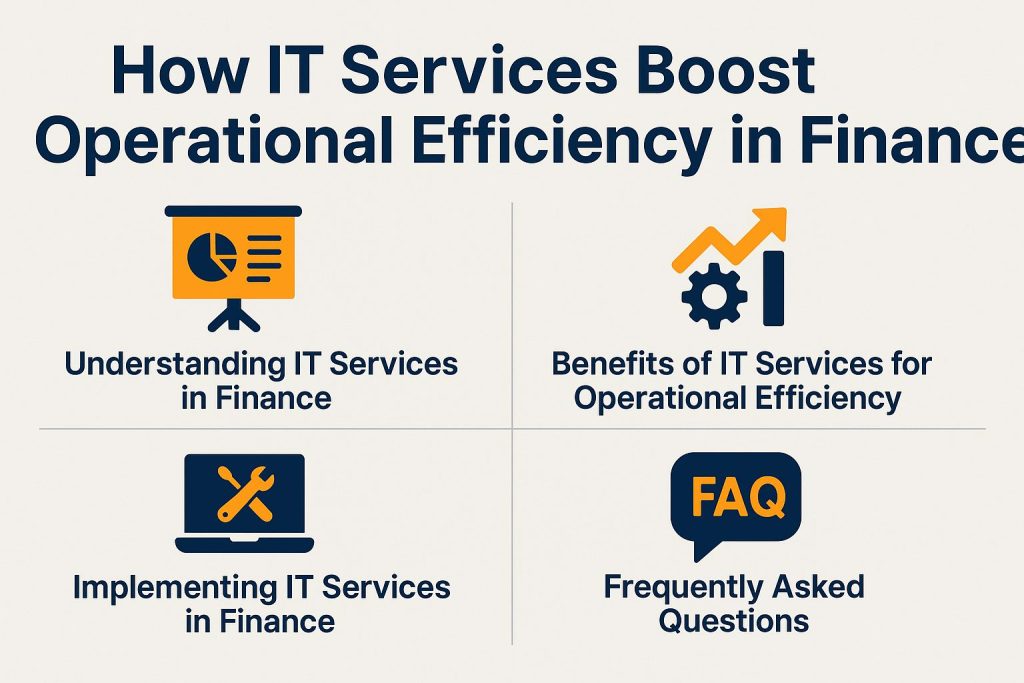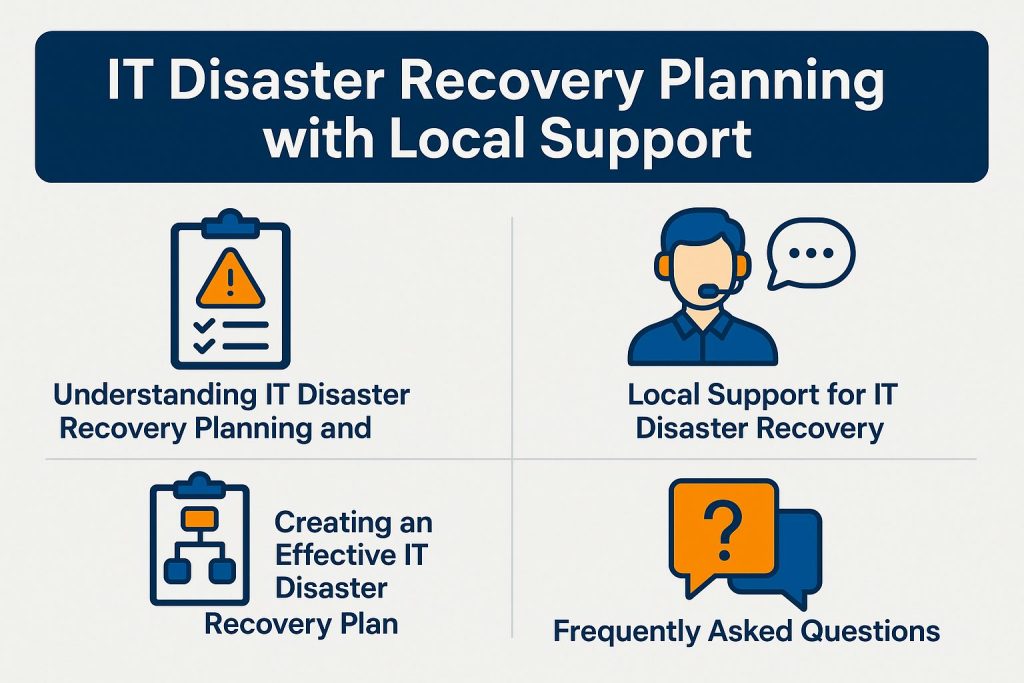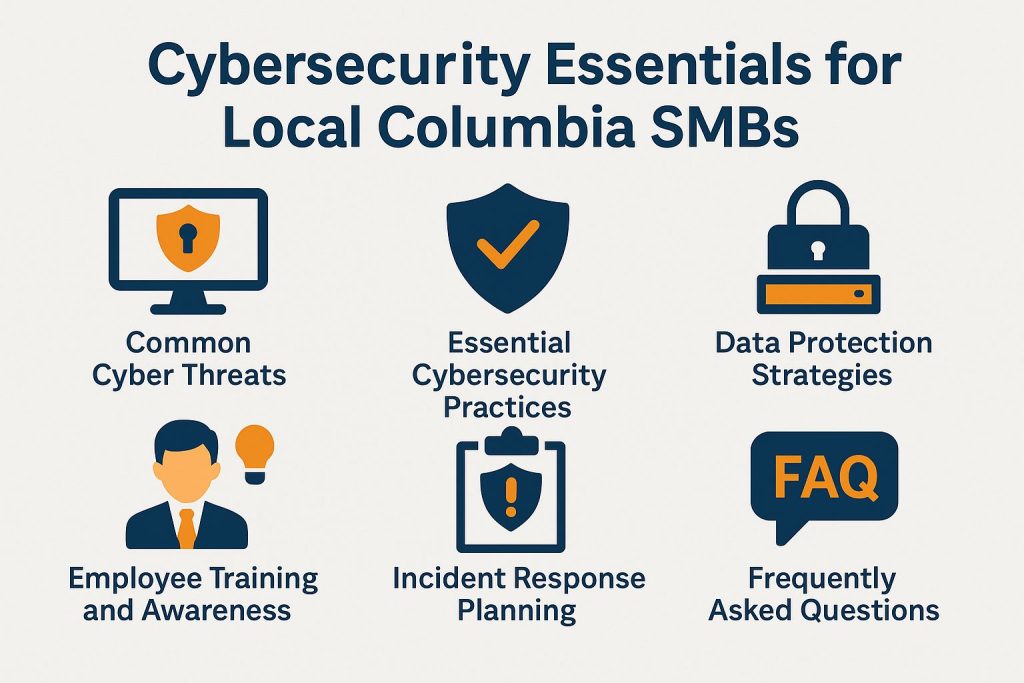How Managed IT Services Reduce Operational Costs for Local SMEs

Today, small and medium-sized enterprises (SMEs) face challenges in managing their IT needs. Managed IT services provide a strategic solution. They provide access to advanced technology and expertise. This approach significantly reduces operational costs. This article shows how these services enhance efficiency and productivity. They also minimize downtime and reduce hardware expenses.
It highlights how to select the right service provider. It also outlines key considerations for success in a competitive market, focusing on vendor management. Embracing managed IT services can transform operations and drive business success.
Explanation of Managed IT Services
Managed IT services include a suite of IT solutions. These solutions support and enhance efficiency for small and medium-sized enterprises (SMEs).
These services proactively manage an organization’s IT infrastructure. They provide tailored support, technology management, and strategic planning for smooth operations.
This approach relieves internal teams from daily IT management. It also provides access to advanced tools and skills not available in-house. Key components such as network monitoring, data backup, cloud computing services, and cybersecurity solutions are integral to these managed services, directly contributing to increased productivity and business continuity.
Organizations use analytics and performance metrics to make informed decisions. This enhances their strategic initiatives. Ultimately, the adoption of managed IT services enables businesses to align their technology with growth objectives while maintaining a competitive edge in today’s fast-paced digital landscape.
Benefits of Managed IT Services for Small and Medium-Sized Enterprises (SMEs)
Implementing Managed IT Services provides numerous advantages for local SMEs, including significant cost reductions, improved business efficiency, strategic IT planning, and enhanced IT operations.
These services allow businesses to streamline their operations through the optimization of IT infrastructure, resource allocation, and risk management, enabling them to concentrate on growth and innovation.
Furthermore, Managed IT Services typically include service level agreements that ensure a specified level of IT support and performance, which can greatly enhance overall operational capabilities.
Cost Reduction and Efficiency
One of the primary benefits of Managed IT Services is the potential for significant cost reduction and improved operational efficiency, especially for small businesses operating within tight IT budgets.
By outsourcing IT functions, these businesses can realize cost savings related to hardware, software, and staffing, allowing them to reallocate resources toward core business activities. Providers typically conduct comprehensive IT cost analyses to identify additional opportunities for cost efficiency, streamline expenditures, and ensure IT compliance.
This strategic approach not only alleviates the burden of managing an in-house IT team but also enables businesses to scale rapidly without the overhead costs associated with hiring and training new employees.
Outsourcing IT management allows organizations to concentrate on critical projects that drive growth, rather than becoming encumbered by routine maintenance and support tasks as mentioned in our overview of Proactive IT Support.
Through proactive monitoring and remote maintenance, Managed IT Services can prevent costly downtimes and interruptions, thereby enhancing productivity and ensuring that business operations run smoothly.
The focus on operational efficiency also facilitates better IT budgeting, as businesses can predict expenses more accurately and avoid unexpected costs.
Access to Expertise and Technology
Managed IT Services give SMEs access to technical expertise and advanced technology. This helps them stay competitive in a changing digital world and promotes business growth. When businesses partner with Managed Service Providers, they gain insights into the latest IT solutions and practices that enhance their capabilities and promote agile strategies. This access facilitates digital transformation initiatives, allowing companies to optimize their processes and improve user experience.
Managed IT Services help organizations adopt solutions that can grow with their needs. This flexibility is vital for keeping up with fast technological changes and market trends, and managing IT challenges effectively.
Specialized support and custom IT solutions allow businesses to explore new technologies like artificial intelligence and cloud computing, thereby fostering a culture of innovation. The combination of expert guidance and state-of-the-art tools not only streamlines operations but also drives long-term growth, positioning businesses favorably against their competitors in a landscape that rewards agility and forward-thinking strategies. For a deeper understanding of the comprehensive support available, explore our Managed IT Services in Columbia, which offer professional tech support tailored to your business needs.
How Managed IT Services Reduce Operational Costs

Managed IT Services are essential for reducing operational costs in businesses by optimizing IT infrastructure and delivering scalable IT support that aligns with specific requirements.
Outsourcing IT functions helps organizations lower the costs of maintaining in-house resources. This strategy allows companies to analyze costs and benefits, finding areas to improve and ensuring that their IT investments generate maximum returns on investment.
Reduced Hardware and Software Expenses
Managed IT Services can cut hardware and software costs significantly for small businesses seeking cost savings. By leveraging cloud services and subscription-based software solutions, organizations can minimize their upfront investments and benefit from lower overall maintenance costs.
Managed Service Providers conduct IT cost analyses to ensure that businesses receive optimal value from their technology investments.
This approach not only streamlines operational expenses but also enhances scalability, enabling companies to adjust their IT resources in response to changing demands. With a pay-as-you-go model, businesses can allocate funds more efficiently, thereby avoiding the financial strain often associated with purchasing and maintaining physical hardware.
Furthermore, cloud solutions bolster this strategy by providing robust security measures and automatic updates, which reduce the risks and costs associated with outdated technology and help protect against cyber threats. Ultimately, Managed IT Services enable organizations to concentrate on growth while enjoying a more predictable financial landscape.
Minimized Downtime and IT Support Costs
Managed IT Services are designed to minimize downtime and associated IT support costs, which can significantly impact a business’s bottom line. Proactive monitoring and incident response plans help organizations fix issues quickly before they grow, ensuring uninterrupted business continuity.
Robust help desk services provide immediate technical support and problem resolution, further reducing costs associated with prolonged system outages.
Through the implementation of systematic incident response strategies, such as identifying potential vulnerabilities and conducting regular system audits, companies are better equipped to tackle IT challenges and maintain IT environment effectiveness.
For example, utilizing a tiered help desk model allows for the swift resolution of minor issues without overburdening senior technicians, thereby enhancing efficiency, service delivery, and curbing labor expenses.
Incorporating automated ticketing systems can streamline support requests and prioritize critical incidents, securing operational continuity and minimizing disruptions. These layered support structures enable organizations to maintain productivity while effectively managing their IT expenditures.
Streamlined Business Processes
Managed IT Services streamline business processes. This improves efficiency and productivity. Process automation and IT governance optimize resources and remove redundant tasks. Employees can focus on strategic activities.
This approach improves operational efficiency. It also fosters innovation within the organization.
For example, automating tasks such as data entry or customer support reduces time on manual processes. This frees teams from routine duties. Intelligent resource allocation and workforce management strategies, which prioritize critical projects based on their business impact, ensure that time and budget are directed towards initiatives that drive growth.
By adopting these practices, businesses can create a streamlined workflow. This promotes accountability and helps maintain a competitive edge in today’s rapidly evolving market.
Implementation of Managed IT Services

Implementing Managed IT Services is complex. It requires careful planning, especially in choosing a provider that fits the organization’s IT strategy, compliance standards, and business intelligence goals.
This means assessing potential providers based on their expertise and technology solutions. This evaluation ensures a partnership that enhances capabilities.
Choosing the Right Managed Services Provider
Choosing the right Managed Service Provider is crucial. It impacts the effectiveness of the IT solutions. Organizations should choose providers with technical expertise and a strong track record. They should also customize services for specific needs.
This alignment ensures that the provider can deliver solutions that enhance operational efficiency and support long-term business objectives.
It is important for businesses to assess how well potential providers understand their specific industry and its associated challenges. The ideal partner should not only possess extensive knowledge of various IT solutions but also offer strategic insights that can drive innovation.
Examining the provider’s relationships with software and hardware vendors can reveal their ability to access the latest technologies and resources, ultimately benefiting the client’s operations and IT Infrastructure Management. For an extensive analysis of this trend, our comprehensive study on how Columbia businesses can benefit from managed IT services examines key factors.
In today’s rapidly evolving digital landscape, these factors foster a successful collaboration that aligns with business goals and ensures effective continuity.
Key Considerations for Small and Medium Enterprises (SMEs)
When SMEs consider Managed IT Services, they must account for several key factors. This includes IT governance and risk management approaches, and ensuring that the selected services facilitate efficient resource allocation and operational continuity.
These considerations are critical for fostering a successful partnership that addresses both immediate and long-term business objectives and supports a robust IT Environment.
It is essential for SMEs to conduct thorough vendor assessments to identify service providers that align with their specific operational needs and can demonstrate a proven track record of compliance with industry standards. Organizations should prioritize the development of clear communication channels and performance metrics with their Managed IT Services provider, ensuring that all parties share a common vision for risk mitigation and IT governance.
By focusing on these aspects, SMEs create a resilient IT environment. This addresses challenges and improves effectiveness and Customer Support.
Frequently Asked Questions
1. How do managed IT services reduce operational costs for local SMEs?

Managed IT services offer a cost-effective solution for SMEs. They provide specialized expertise at a lower cost than hiring an in-house IT team. This saves money on salaries, benefits, and training.
2. What are some specific ways that managed IT services can reduce operational costs for local SMEs?
Managed IT services reduce operational costs for SMEs. They implement efficient processes, provide proactive support, and minimize costly downtime. Services like cloud computing let SMEs pay only for what they use.
3. Is outsourcing IT services more cost-effective for SMEs compared to hiring an in-house IT team?
Yes, outsourcing IT services is often more cost-effective for SMEs. They save on overhead costs and gain access to skilled IT professionals without the expense of hiring and training.
4. Can managed IT services help local SMEs budget and plan for their IT expenses?
Yes, managed IT services help SMEs budget for IT expenses. They offer predictable, flat-rate pricing. This helps SMEs allocate resources and plan without unexpected costs.
5. Are there any other hidden costs that managed IT services can help local SMEs avoid?
Yes, managed IT services help SMEs avoid hidden costs. This includes software licensing fees, hardware purchases, and maintenance. These costs are often included in the service package.
6. Can managed IT services help local SMEs improve their overall operational efficiency?
Yes, managed IT services improve operational efficiency for SMEs. They streamline processes, provide proactive support, and recommend cost-saving solutions. This saves time and reduces operational costs.




